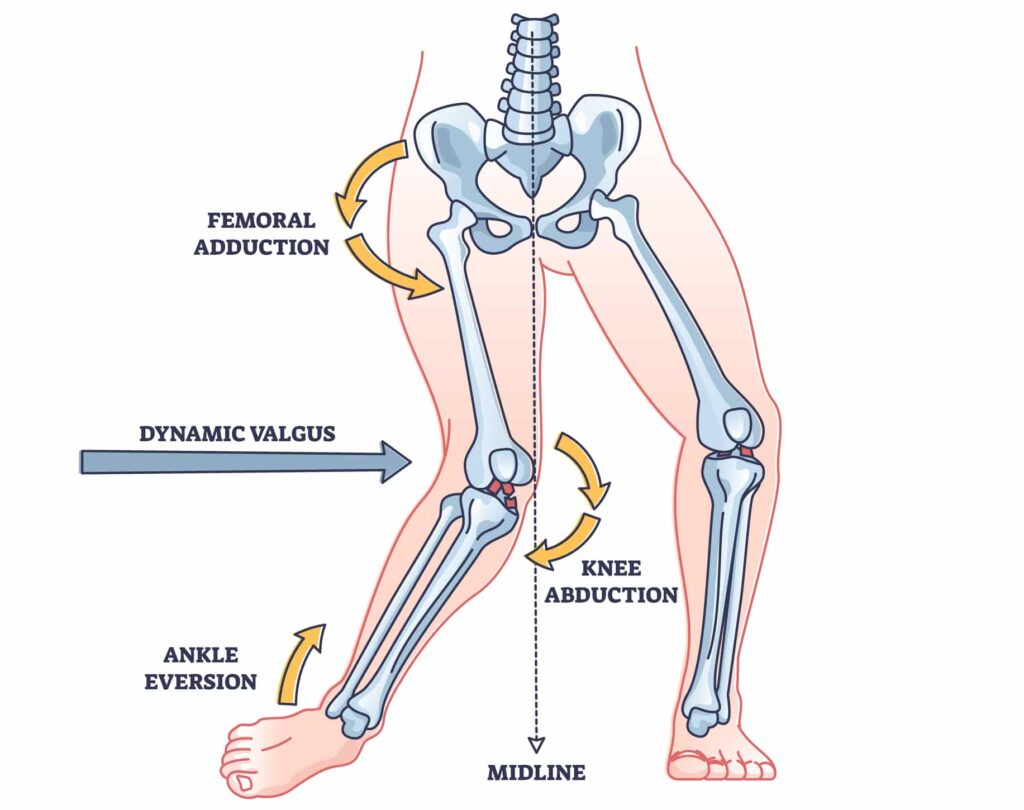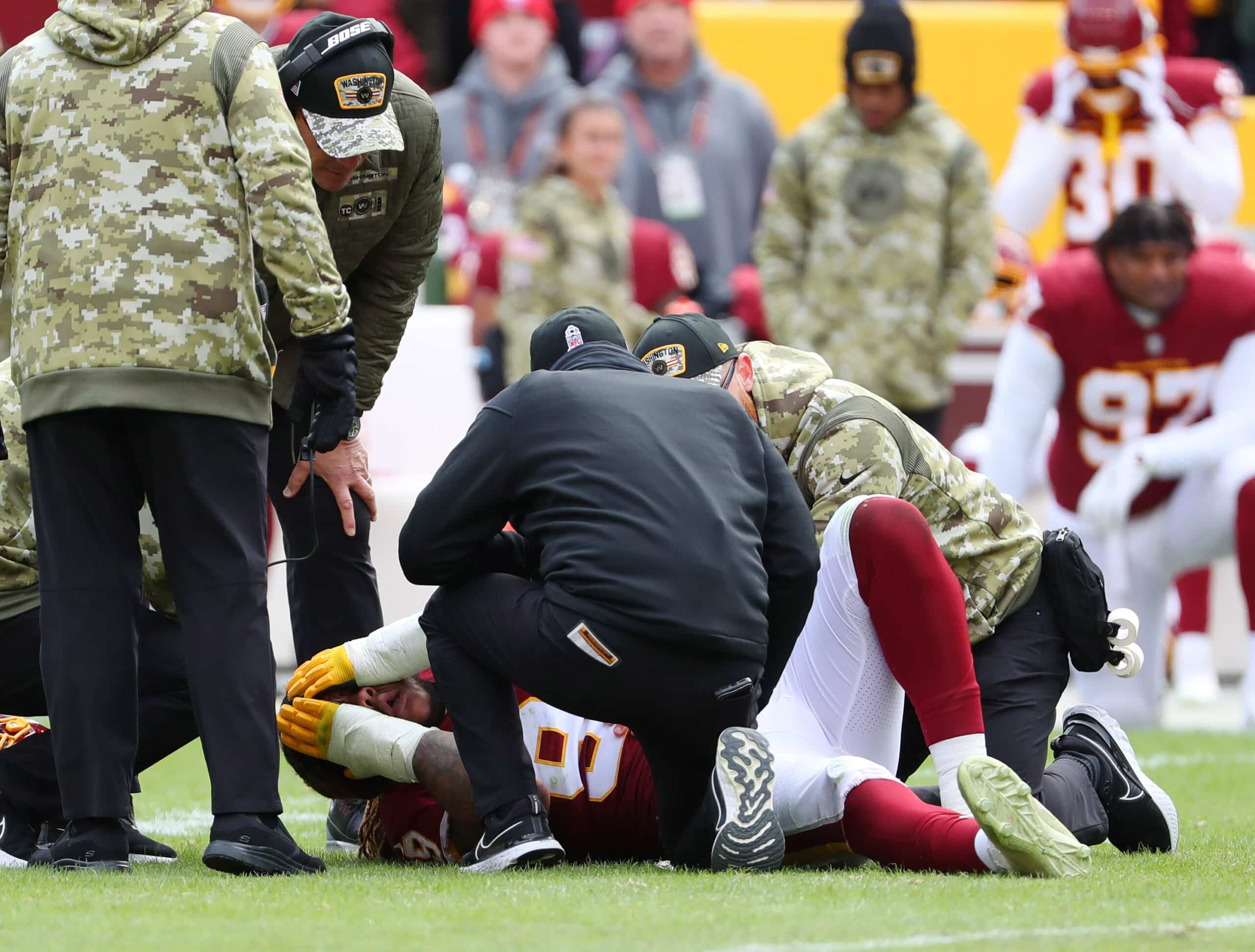Marc Darrow, MD, JD.
Injury to the anterior cruciate ligament (ACL) is not the most common of knee injuries but it is certainly the most well known. “ACL tear or ACL rupture” are common, not only in professional sports but also in high school and amateur sports. Recently, a few professional athletes have made stunning and prompt returns to their sports. These are currently considered exceptions. Those who do return, because of the extensive resources available to them at the pro – level, usually do so 9 – 12 months down the road. Those, without the enormous resources of pro athlete services with complete ACL tears or ruptures have less chance. People with ACL injuries do have options to chose from besides surgery. These options typically include therapies to compensate for the ACL damage by strengthening the surrounding areas of the knee. What are the realistic options of returning to sport after and ACL rupture? What are the risks of requiring a second ACL surgery after a graft failure? Are there truly non-surgical options? Let’s look at the research.
Returning to sport after ACL surgery
A January 2022 study (1) suggested that following ACL reconstruction:
- about 80% patients return to some type of sport,
- but only 65% return to preinjury levels of participation, and
- only 55% return to competitive sport.
A September 2024 study (2) looked to predict who would and who would not return to sports following ACL surgery. The researchers looked at several factors including preoperative isokinetic (thigh muscle) strength, treatment of meniscal injuries, left vs. right side injury and graft site were found to predict recovery of more than 85% limb symmetry index (operated side as good as non-operated side) in knee extension and flexion strength. (The threshold for return to sports is generally considered a limb symmetry index of more than 85%.) Despite the numerous factors that were analyzed, the predictive power was moderate and there were other considerations to consider beyond thigh muscle strength.
An April 2024 study (3) investigated the time taken for individuals to return to sport post-ACL reconstruction, assess the rate of re-injury and evaluate the reliability of the International Knee Documentation Committee (IKDC) and Knee Injury and Osteoarthritis Outcome Score (KOOS) scoring systems in predicting a return to sport at the pre-injury level.
The IKDC is a patient reported assessment that , when results are tallied, offer an functional overall rating. The IDKS asks patients about:
- Symptoms such as pain, swelling, stiffness, instability or stability.
- the ability to play sport or athletic activity
- and knee function.
“The Knee Injury and Osteoarthritis Outcome Score (KOOS) is self-administered and assesses five outcomes: pain, symptoms, activities of daily living, sport and recreation function, and knee-related quality of life.” In 1998, doctors found (4) “the KOOS proved reliable, responsive to surgery and physical therapy, and valid for patients undergoing anterior cruciate ligament reconstruction.” It is considered a standard scoring system today in assessing knee treatment outcomes.
In this April 2024 study of 104 patients who underwent ACL reconstruction, 73% (76 of the patients) successfully returned to sport after ACL reconstruction, with no significant difference being found between professional and recreational athletes .
- After reconstruction, 31.7% (33 of the patients) experienced an ipsilateral (same side) or contralateral (other side) ACL tear, with those returning to sport within six months showing a fivefold increase in re-injury risk compared to individuals who returned at eight or 12 months, suggesting a significant association between return duration and re-injury.
- The relationship between scoring systems and return to sport at the pre-injury level of performance was analyzed . . . revealing that achieving scores of 85.6 (out of 100) or higher in IKDC or 89 or higher in KOOS (out of 100) meant having a 95% probability of returning to sport at the pre-injury level.
How an ACL tear occurs
Professional basketball players
A March 2024 study (5) of 38 ACL injuries in professional male European basketball leagues from the 2013-2014 to 2019-2020 seasons found most injuries were indirect contact injuries.
- More injuries occurred while attacking (25 injuries 69%) than defending (11 injuries, 31%).
- There was 1 (3%) direct contact injury, 21 (58%) indirect contact injuries, and 14 (39%) noncontact injuries.
- Most injuries (83%) occurred during 3 main situations: offensive cut, landing from a jump, and defensive cut.
- Half of the injuries occurred during the first 10 minutes of effective playing time. More injuries occurred in guards (58%), and 73% of all injuries occurred in the scoring zone.
Doctors at New York University (6) examined National Basketball Association players (NBA) to see what type of impact ACL reconstruction had on their careers. At the forefront non-professional athletes need to understand that these players have huge medical and training resources behind them. Even with these resources – here is what the NYU doctors found:
- The players: Seventy-nine players (80 knees) with acute ACL tears in the NBA between the 1984-2014 seasons.
- The study: Pre- and post-injury performance outcomes including seasons played, games played, games started, minutes per game, points per game, field goals, 3-point shots, rebounds, assists, steals, blocks, turnovers, personal fouls, usage percentage and player efficiency ratings were compared .
- Sixty-eight of seventy-nine players (86.1 %) returned to play in the NBA following ACL reconstruction.
- Many did not last – “There was a significantly higher rate of attrition from professional basketball for players with a history of ACL reconstruction.”

NFL wide receivers were not as good after ACLR
A February 2021 study (7) of wide receivers playing in the National Football League who had an recovered from ACLR surgery found that many of these players did not return to pre-injury form. In this study team doctors examined the time to return to play and evaluate the performance level in wide receivers in the National Football League following anterior cruciate ligament (ACL) reconstruction.
A total of 29 wide receivers in the National Football League who underwent ACL reconstruction between 2013 and 2017 were included in the study.
- Of the wide receivers, 9 of 29 (31%) did not return to play in a regular season game following ACL reconstruction.
- For players who did return to play, 20 of 29 (69%), the average time was 10.9 months.
- When the researchers compared the ACL tear group with the matched control cohort, players with ACL tears ended their careers on an average of 1.9 seasons earlier and also played less than half the number of games.
- Those that returned to play also saw decreased performance statistics in targets, receptions, receiving yards, and touchdowns.
Soccer players were not ready to return from ACL reconstruction
A May 2021 paper (8) suggested that while the effects of exercise on anterior knee laxity and anterior knee stiffness have been documented in healthy participants, only limited evidence has been provided for surgically treated patients (athletes) cleared to return to sports after anterior cruciate ligament (ACL) reconstruction (ACLR). The purpose of this study then was to to determine if 45 minutes of a soccer match simulation lead to acute (beneficial) changes in anterior knee laxity and anterior knee stiffness in soccer players returning to sport within 12 months after ACLR. The researchers thought that the reconstructed knee of the ACLR group would exhibit an “altered” response to sport-specific exercise. Altered meaning less successful.
- A total of 13 soccer players cleared to return to sport after ACLR and 13 healthy control soccer players were recruited for the study.
- Results: Soccer players at the time of return to sport after ACLR showed an altered mechanical response to a sport-specific match simulation consisting of bilaterally unchanged anterior knee laxity and anterior knee stiffness.
- Clinical relevance: Soccer players showing altered anterior knee laxity and anterior knee stiffness in response to exercise after ACLR may not be ready to sustain their preinjury levels of sport, thus potentially increasing the risk of second ACL injuries.
Jumping weakness after ACL reconstruction
A May 2022 study (9) suggested that single leg vertical jump performance identifies knee function deficits at return to sport after ACL reconstruction in male athletes. Here is what these researchers wrote: “Vertical jump performance (height) is a more representative metric for knee function than horizontal hop performance (distance) in healthy individuals. It is not known what the biomechanical status of athletes after anterior cruciate ligament (ACL) reconstruction (ACLR) is at the time they are cleared to return to sport or whether vertical performance metrics better evaluate knee function.” Here is what the researchers found: Jump performance, assessed by jump height and Reactive Strength Index, was significantly lower in the involved (ACL reconstructed knee) than the uninvolved limb and controls, with large effect sizes. During vertical jumps, male athletes after ACLR at return to sport still exhibit knee biomechanical deficits, despite symmetry in horizontal functional performance and strength tests. Vertical performance metrics like jump height and Reactive Strength Index can better identify interlimb asymmetries than the more commonly used hop distance and should be included in the testing battery for the return to sport.
A July 2022 study (10) asked if core stability training improved hopping performance and kinetic asymmetries during single-leg landing in anterior cruciate ligament reconstructed patients? The researchers noted that core stabilization is common within rehabilitation, but its influence on hopping performance and single-leg landing kinetics among athletes post-ACLR is unclear. After testing twenty-four male professional athletes who had ACL reconstruction surgery for improvements following an 8-week core stability exercise program. The study findings indicate the positive effect of core exercise on improving and balancing movement in the operated leg compared to the non-operated leg.
A March 2023 study (11) of 40 patients who underwent ACLR 6 months before (18 females/22 males about 19 years old) demonstrated knee-avoidant jumping mechanics and had significant reductions in knee joint power (quadricep strength) on the surgically repaired limb side.
References
1 Waldron K, Brown M, Calderon A, Feldman M. Anterior cruciate ligament rehabilitation and return to sport: how fast is too fast?. Arthroscopy, sports medicine, and rehabilitation. 2022 Jan 1;4(1):e175-9.
2 Wenning M, Sofack GN, Zöller D, Mauch M, Heitner AH, Paul J, Zahn P, Ritzmann R. Predicting the Recovery of Isokinetic Knee Strength 6 Months After Anterior Cruciate Ligament Reconstruction. Orthopaedic Journal of Sports Medicine. 2024 Sep;12(9):23259671241264845.
3 Paris AN, Colin NG, Gatt T, Galdes N, Wehbi H, Marston D, Galdes D, Carabott N, Esposito I. Return to sport, re-injury and performance after the anterior cruciate ligament reconstruction: evaluating the role of International Knee Documentation Committee (IKDC) and Knee Injury and Osteoarthritis Outcome Score (KOOS) scoring systems. Cureus. 2024 Apr;16(4).
4 Roos EM, Roos HP, Lohmander LS, Ekdahl C, Beynnon BD. Knee Injury and Osteoarthritis Outcome Score (KOOS)—development of a self-administered outcome measure. Journal of Orthopaedic & Sports Physical Therapy. 1998 Aug;28(2):88-96.
5 Tosarelli F, Buckthorpe M, Di Paolo S, Grassi A, Rodas G, Zaffagnini S, Nanni G, Della Villa F. Video analysis of anterior cruciate ligament injuries in male professional basketball players: injury mechanisms, situational patterns, and biomechanics. Orthopaedic journal of sports medicine. 2024 Mar;12(3):23259671241234880.
6 Kester BS, Behery OA, Minhas SV, Hsu WK. Athletic performance and career longevity following anterior cruciate ligament reconstruction in the National Basketball Association. Knee Surg Sports Traumatol Arthrosc. 2016 Mar 12.
7 Burgess CJ, Stapleton E, Choy K, Iturriaga C, Cohn RM. Decreased Performance and Return to Play Following Anterior Cruciate Ligament Reconstruction in National Football League Wide Receivers. Arthroscopy, sports medicine, and rehabilitation. 2021 Apr 1;3(2):e455-61.
8 Nuccio S, Labanca L, Rocchi JE, Mariani PP, Sbriccoli P, Macaluso A. Altered Knee Laxity and Stiffness in Response to a Soccer Match Simulation in Players Returning to Sport Within 12 Months After Anterior Cruciate Ligament Reconstruction. Am J Sports Med. 2021 May 26:3635465211013020. doi: 10.1177/03635465211013020. Epub ahead of print. PMID: 34038185.
9 Kotsifaki A, Van Rossom S, Whiteley R, Korakakis V, Bahr R, Sideris V, Jonkers I. Single leg vertical jump performance identifies knee function deficits at return to sport after ACL reconstruction in male athletes. British Journal of Sports Medicine. 2022 Feb 7.
10 Fallah Mohammadi M, Dashti Rostami K, Shabanzadeh S, Hosseininejad SE, Ghaffari S, Thomas A. Does core stability training improve hopping performance and kinetic asymmetries during single-leg landing in anterior cruciate ligament reconstructed patients? Res Sports Med. 2022 Jul 21:1-11. doi: 10.1080/15438627.2022.2102919.
11 Graham MC, Reeves KA, Johnson DL, Noehren B. Relationship between quadriceps strength and knee joint power during jumping after ACLR. Orthopaedic Journal of Sports Medicine. 2023 Mar 31;11(3):23259671231150938.






